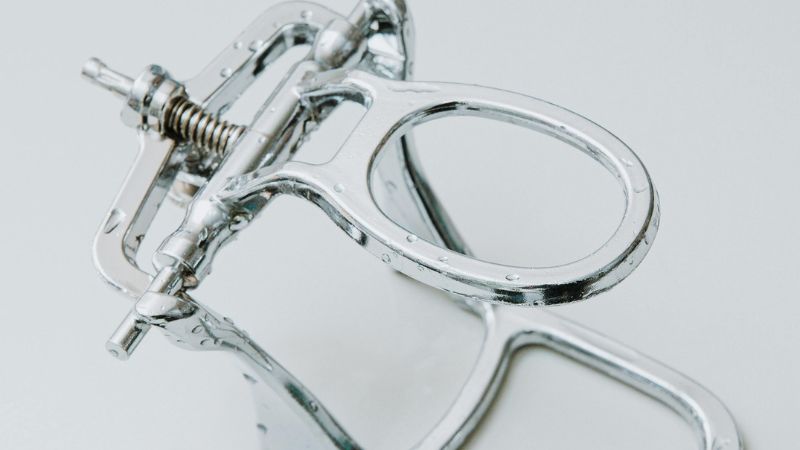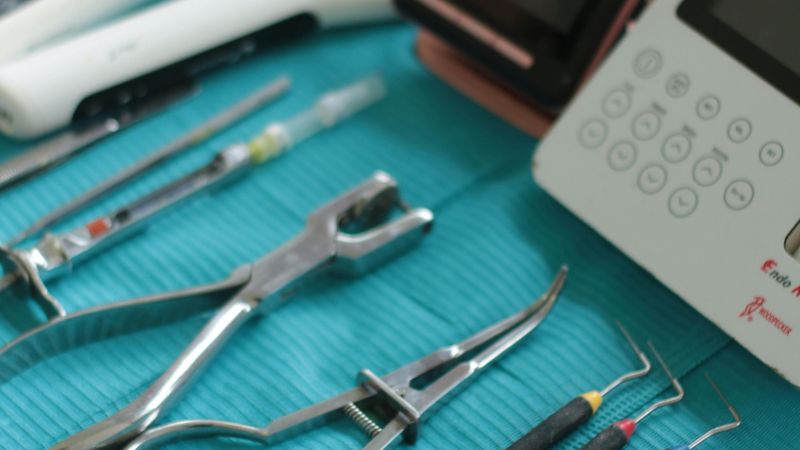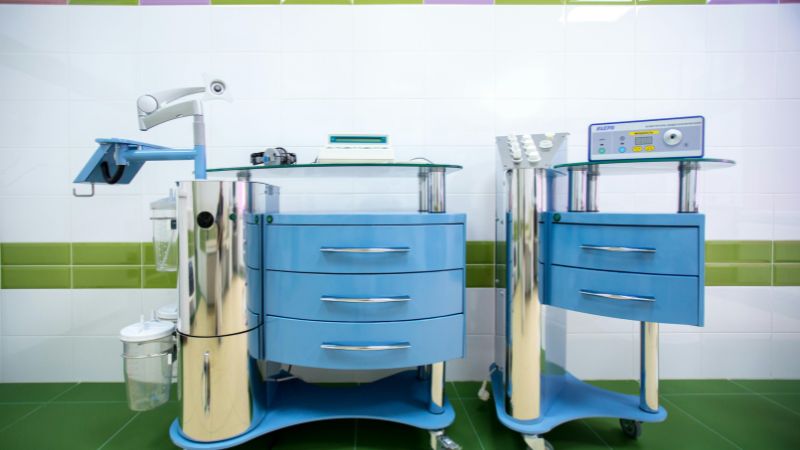Medical die casting is a process that shapes metal parts used in healthcare equipment by forcing molten metal into reusable molds under high pressure. This technique helps create strong and precise components for devices such as surgical tools, diagnostic machines, and hospital hardware. Readers interested in how healthcare technology is built can learn from this article about how and why it plays a key role in advancing modern medical devices.
Fundamentals of Medical Die Casting
Medical die casting is a key method for producing high-quality components for medical devices. The process helps deliver parts that must meet strict standards for safety, precision, and cleanliness. It affects how medical technology advances and supports many healthcare needs.
Definition and Importance
Medical die casting is a manufacturing process where molten metal is forced into a mold, called a die, under high pressure. The process is critical for the medical industry because it allows for mass production of complex parts with reliable quality. These parts often have to fit tight tolerances and be free from defects. Medical casting also enables faster production cycles and reduces costs, making advanced medical devices more accessible.
This technique also supports traceability and regulatory compliance. Each manufactured item can be traced back to its batch and production conditions, which is essential for patient safety and recalls.
Applications in Healthcare
Die casting is used to make parts for a wide variety of medical devices and equipment. Examples include housings for diagnostic machines, surgical tools, ventilator parts, and implantable device components. These parts need to withstand sterilization processes, repeated cleaning, and sometimes exposure to harsh chemicals.
Die Casting Processes and Techniques
Medical die casting uses specialized methods to produce precise, complex parts for healthcare devices. These processes help control quality, speed, and cost for both small and large production runs.
Overview of Manufacturing Procedures
Medical die casting combines several manufacturing procedures to achieve stringent accuracy and repeatability. The main process is injection of molten metal into a mold, called a high pressure die. This technique creates parts with the slightest margins of errors and smooth surfaces.
Common metals include aluminum, zinc, and magnesium. Production cycles can be fast, which is important for high-volume production. Most systems use automated machines to handle the metal and control cooling rates. This ensures consistent product quality.
A table below shows some typical processing features:
| Feature | Description |
|---|---|
| Material | Aluminum, Zinc, Magnesium |
| Pressure | High-pressure (up to 20,000 psi) |
| Cycle Time | Seconds to minutes |
| Volume | Short-run and high-volume |
Precision Die Casting

Precision die casting is essential for medical devices that require exact shapes and reliable performance. It focuses on minimizing errors and producing repeatable results across production cycles.
This approach uses precise molds and advanced machines with deviations often smaller than 0.1 mm. Automated monitoring checks each step to reduce defects. Manufacturers can achieve detailed surface finishes and thin walls. This helps make intricate parts without heavy post-processing and reduce part weight while maintaining strength,
Rapid Prototyping
Rapid prototyping allows designers to test ideas before full-scale production. Using quick-turn molds or 3D printing, teams can make prototypes in days instead of weeks.
This speeds up the time-to-market for new devices. It also helps identify errors early, saving costs in the long run. Short-run productions are another benefit, letting manufacturers create limited batches for design validation or clinical testing. This process supports faster innovation in the medical industry.
Medical Die Casting Applications
Medical die casting produces precise, reliable components for healthcare technology. This process helps make surgical tools, device parts and components, and complex imaging equipment strong, lightweight, and ready for safe use.
Surgical Instruments and Equipment

Die casting allows manufacturers to create surgical instruments and equipment with exact shapes and sizes. This accuracy is important for products like forceps, clamps, and certain implants.
Many surgical tools need to be both lightweight and resistant to corrosion, while Sterilization compatibility is another important need, and die-cast parts offer smooth surfaces that are easier to clean and sterilize, fulfilling all the requirements.
Hospitals often use die cast equipment, like handles or frames, because they are strong and durable. These parts are also made in high volumes, allowing for lower production costs while maintaining tight quality standards.
Medical Device Parts and Housings

Many modern medical devices depend on die cast parts and housings to protect sensitive components during daily use. Items like infusion pumps, ventilators, and patient monitors use die-cast exteriors for structural strength and lightweight portability. Internal brackets and connectors may also be die-casted to hold electronics in place.
These housings must allow access for maintenance, support cooling, and provide electrical shielding. Die casting enables the integration of all these features into a single piece, reducing the need for extra parts. Custom shapes and openings can also be included to support wiring, screens, or ports.
Consistent quality is essential because these enclosures sometimes come in direct contact with patients and healthcare staff. Housings casted with this technique are made to tight tolerances, helping the whole device pass safety and durability tests.
Diagnostic and Imaging Devices
Diagnostic and imaging equipment includes large, complex systems like MRI machines, ultrasound devices, and X-ray units. Many of the structural frames, shields, and covers in these machines are made by die casting. This process helps keep parts strong but light, so equipment can be moved or adjusted easily.
Inside these systems, die-cast components help secure sensors, lenses, and screens. Good thermal management is also important to protect imaging electronics. Die castings provide heat dissipation and protection against electromagnetic interference.
Materials in Medical Die Casting
From common options like aluminum and zinc, to the advanced biocompatible materials, the choice of material is important for meeting required levels of strength, corrosion resistance, and safety in medical products. Each casting material has unique properties that make it suitable for specific uses, from surgical tools to device housings.
Aluminum and Aluminum Alloys
Aluminum and its alloys are widely used in medical die casting for their light weight, good strength, and resistance to corrosion. These materials are often used for parts that need to be strong but easy to handle. Common examples are medical device frames, housings, and some surgical tools.
Aluminum also has a natural oxide layer that protects it from rust and chemical attack. This is helpful in medical environments where cleaning with harsh chemicals is common. Aluminum parts also resist bacteria buildup better than many plastics.
Magnesium and Magnesium Alloys
Magnesium is known for being even lighter than aluminum. Magnesium alloys offer a good balance of strength, lightness, and shock absorption. This makes them a good option for products where weight is critical, like portable medical devices or handheld surgical equipment.
One thing to note is that magnesium needs surface treatment or coatings to protect against corrosion, especially in moist settings. With proper care, magnesium parts can last well in medical tools and devices.
Zinc and Zinc Alloys
Zinc alloys are chosen for their excellent precision and fine detail in die casting. They flow well into molds, making it possible to create complex shapes and tiny features that are important in medical device parts.
Zinc is heavier than aluminum and magnesium, but it is tougher and less likely to crack. The high impact resistance makes zinc alloys suitable for enclosures, connectors, and small mechanical parts found in medical devices. It also provide natural corrosion resistance and are easy to plate or finish. Their durability and moldability make them a trusted choice.
Biocompatible Materials
Some parts, such as implants or tools that contact tissue, require biocompatible materials. This means the material will not cause harm, allergies, or reactions in the human body. Common biocompatible casting materials include titanium alloys and stainless steel.
These materials are less commonly die cast than aluminum, magnesium, or zinc. However, certain materials have been developed for safe use in the body. Properties like corrosion resistance, non-toxicity, and strength are especially important.
Frequently Asked Questions
What are the regulatory considerations for medical die casting?
Medical die casting must meet regulations from organizations such as the FDA or ISO. These rules help ensure parts are safe for use in the human body or in contact with tissues.
Regulations may require traceability, documentation, and regular audits. Materials must be biocompatible and free of harmful substances. Manufacturers often submit samples for testing and approval before production.
How does the finishing process of die cast medical components affect their performance?
Finishing processes remove sharp edges, polish surfaces, and add coatings that protect against corrosion. These steps can reduce the risk of infection during medical use.
A smooth finish makes cleaning and sterilization easier. Some coatings can also improve how long the component lasts and how well it works during its use.
